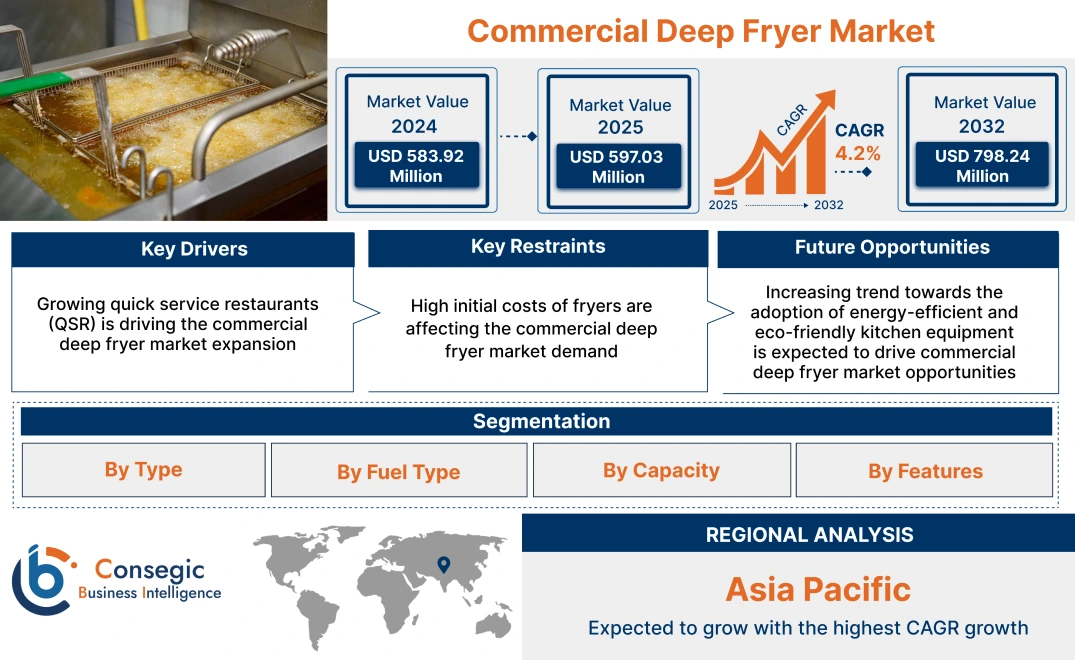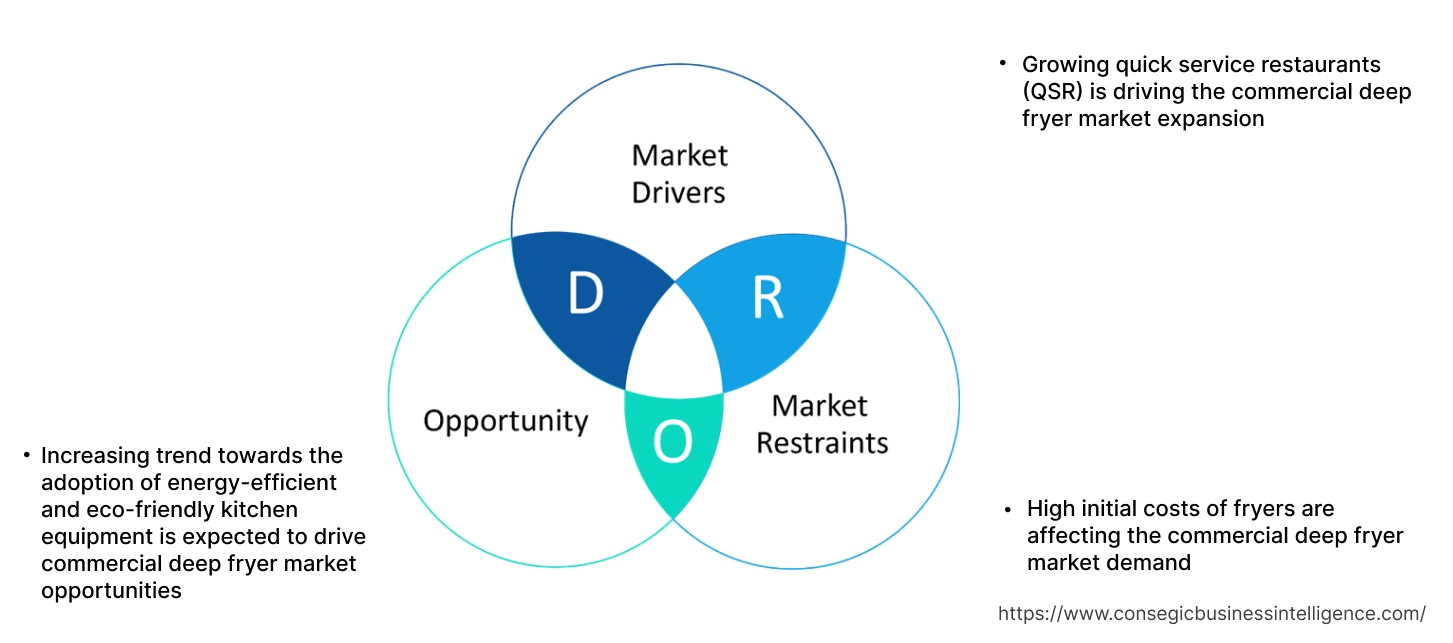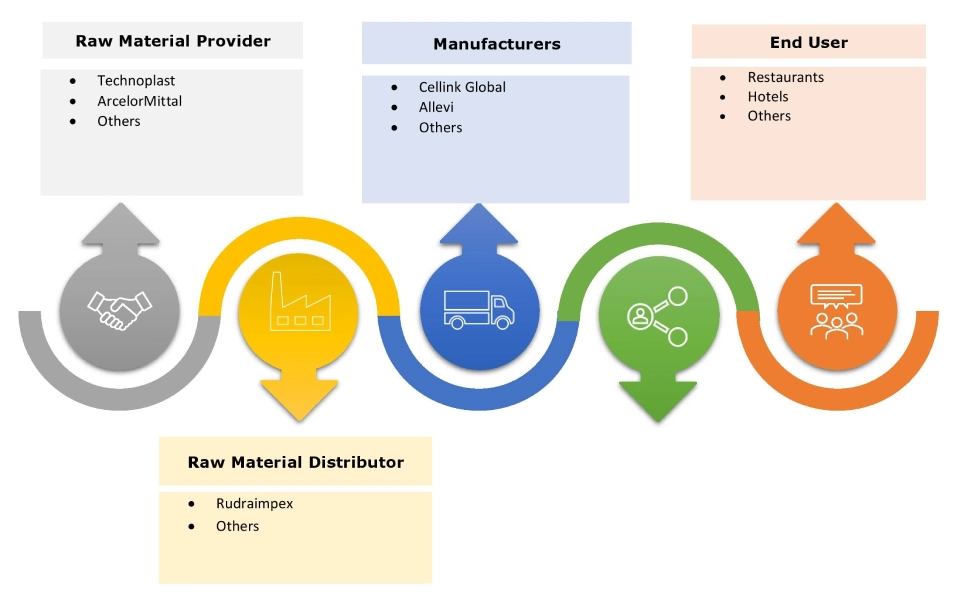Commercial Deep Fryer Market Size:
Commercial Deep Fryer Market Size is estimated to reach over USD 798.24 Million by 2032 from a value of USD 583.92 Million in 2024 and is projected to grow by USD 597.03 Million in 2025, growing at a CAGR of 4.2% from 2025 to 2032.
Commercial Deep Fryer Market Scope & Overview:
A commercial deep fryer is a kitchen appliance used in businesses such as restaurants to cook food by submerging it in hot oil. It is designed to handle large quantities of food efficiently, producing fried items like french fries, chicken, fish, and others. The global rise in meat consumption, coupled with the wide selection available at fast-food restaurants, is anticipated to have a favorable impact on the market during the forecast period.
How is AI Transforming the Commercial Deep Fryer Market?
AI is being integrated into commercial deep fryers to enhance efficiency, improve food quality, and automate operations. This includes features such as automated temperature control, programmable settings, and even remote monitoring, which leads to improved food quality, reduced waste, and optimized cooking operations, among others.
Additionally, AI-powered systems can monitor oil temperature, adjust cooking times, and even predict when maintenance is needed, further reducing human error and optimizing energy consumption. Thus, the above factors are projected to contribute to market growth during the forecast period.
Commercial Deep Fryer Market Dynamics - (DRO) :
Key Drivers:
Growing quick service restaurants (QSR) is driving the commercial deep fryer market expansion
QSRs, also known as fast-food restaurants, are represented by their focus on speed of service, while offering a limited menu of items that can be prepared and served quickly. This operational model heavily relies on kitchen equipment that can consistently produce high volumes of food in short timeframes, making deep fryers an essential component of QSR kitchens.
Brands such as McDonald's, KFC, Burger King, and Wendy's are continuously opening new outlets in emerging markets to capture the growing consumer base. These expansions necessitate substantial investments in kitchen equipment, including deep fryers, to maintain consistent food quality and service speed across all locations. Moreover, QSRs are increasingly innovating their menus to include a variety of fried food options to attract a diverse customer base. These factors not only boost the frequency of deep fryer usage but also drives the need for advanced frying technology that can handle different types of food with varying cooking requirements.
- For instance, in March 2025, Oil Chef launched pot fryer or pressure deep fryer for quick service restaurants to reduce cooking time from 28 minutes to 21 minutes.
Therefore, according to the commercial deep fryer market analysis, the growing quick service restaurants (QSRs) is driving the commercial deep fryer market size and growth.
Key Restraints:
High initial costs of fryers are affecting the commercial deep fryer market demand
Small and medium-sized establishments, particularly those in developing regions, often find it challenging to invest in high-end deep fryers due to budget constraints. Additionally, the maintenance and operational costs associated with advanced frying equipment can be expensive for smaller businesses. Further, the need for specialized ventilation systems and compliance with safety regulations can further add to the overall cost, posing a challenge to market development. Thus, the aforementioned factors would further impact the commercial deep fryer market size.
Future Opportunities :
Increasing trend towards the adoption of energy-efficient and eco-friendly kitchen equipment is expected to drive commercial deep fryer market opportunities
As governments and regulatory bodies worldwide impose stricter energy efficiency standards and environmental regulations, food service operators are seeking sustainable solutions to reduce their energy consumption and carbon footprint. Manufacturers can capitalize on this opportunity by developing and promoting electric deep fryers that meet these stringent standards and offer enhanced energy efficiency features. Additionally, the growing consumer awareness and preference for environmentally responsible businesses provide a competitive advantage to food service establishments that invest in eco-friendly equipment.
- For instance, Lincat’s electric twin tank deep fryers feature dual independently controlled tanks for the cooking different foods without flavour transfer. The fryer focuses on ease of use and energy savings. It is well-suited for kitchens where space is limited and cooking demands are infrequent.
Thus, based on the above commercial deep fryer market analysis, the increasing adoption of energy-efficient and eco-friendly kitchen equipment is expected to drive the commercial deep fryer market opportunities and growth.
Commercial Deep Fryer Market Segmental Analysis :
By Type:
Based on type, the commercial deep fryer market is segmented into automatic deep fryers, semi-automatic deep fryers, and manual deep fryers.
Trends in the type:
- The integration of automatic filtration, programmable temperature controls, and enhanced safety measures leads to improved oil handling, greater efficiency, and the potential for reduced restaurant operating costs, in turn driving the need for automatic deep fryers.
- The growing need for specialized fried foods is driving the adoption of specialty fryers, as they offer tailored solutions to meet the unique requirements of different culinary applications.
- Thus, based on the above analysis, these factors are driving the commercial deep fryer market demand.
The manual deep fryers segment accounted for the largest revenue share in the year 2024.
- With fewer complex components such as automatic filtration or programmable controls, manual fryers can be perceived as more straightforward to operate and less prone to mechanical issues. This can be appealing for smaller operations or those prioritizing basic functionality.
- Manual fryers are often well-suited for kitchens with limited space or occasional cooking requirements. They can handle the frying needs without the larger footprint and higher capacity of some automatic models.
- Manual deep fryers are generally more cost-effective to purchase as compared to their automatic counterparts. In price-sensitive markets or for businesses with tighter budgets, this remains a significant advantage.
- Thus, based on the above analysis, these factors are further driving the commercial deep fryer market growth.
The automatic deep fryers segment is anticipated to register the fastest CAGR during the forecast period.
- With growing environmental awareness and rising operational costs, businesses are actively seeking energy-efficient fryer models. This includes features like improved insulation, rapid heating elements, and optimized oil filtration systems that reduce energy consumption and extend oil life.
- While traditional deep frying remains popular, there is a rising demand for healthier alternatives. This is pushing manufacturers to innovate and offer commercial fryers with low-oil or air-frying capabilities, catering to health-conscious consumers.
- Modern commercial deep fryers are increasingly incorporating smart features such as automatic temperature control, digital timers with alarms, self-cut-off systems, and even remote monitoring and control through mobile apps. These technologies enhance precision, safety, and ease of use, reducing the risk of overcooking or burning food.
- For instance, TSUNG HSING FOOD MACHINERY CO., LTD offers automatic fryers that are suitable for large number of products, such as beans chips, meats, and puffed snack foods.
- Thus, based on the above analysis and developments, these factors are expected to drive the commercial deep fryer market share and growth during the forecast period.
By Fuel Type:
Based on the fuel type, the commercial deep fryer market is segmented into electric deep fryers, gas deep fryers, and propane deep fryers.
Trends in the fuel type:
- The high demand for quick-service fried items such as fries, chicken, and fish necessitate the use of reliable and high-performance deep fryers.
- Institutional kitchens, such as those in schools, hospitals, and corporate cafeterias, use electric or gas deep fryers to prepare large quantities of fried foods. The need for commercial deep fryers in these diverse applications highlights the importance of reliable and efficient frying equipment in the food service sector.
The gas deep fryers segment accounted for the largest revenue share of 57.29% in the year 2024.
- Manufacturers are focusing on designs that minimize gas consumption while maintaining optimal frying temperatures. Features such as improved burner technology, better insulation, and more efficient heat transfer systems are increasingly incorporated in gas deep fryers.
- These fryers are renowned for their rapid heating capabilities and ability to maintain consistent cooking temperatures, which are essential for producing high-quality fried foods.
- The use of natural gas or propane as a fuel source provides instant heat, allowing chefs to quickly adjust cooking conditions to meet the requirements.
- Thus, based on the above analysis these factors would further supplement the commercial deep fryer market
The electric deep fryers segment is anticipated to register the fastest CAGR during the forecast period.
- The increasing focus on energy efficiency and sustainability is influencing the development of all types of electric commercial deep fryers.
- Manufacturers are incorporating features such as insulated fry vats, rapid recovery heating elements, and eco-friendly oil filtration systems to reduce energy consumption and minimize environmental impact.
- QSRs and fast-food chains predominantly rely on deep-fried foods to cater to the high need for quick and tasty meals. These establishments are increasingly investing in advanced electric deep fryers that offer features such as automatic temperature control, quick heating, and ease of cleaning to enhance operational efficiency and food quality.
- For instance, iBELL DF610P electric deep fryer is designed with adjustable temperature range for 60-degree to 200-degree. This deep fryer is a highly functional appliance, providing a powerful 2500W heating element and a generous 6-liter capacity, making it ideal for commercial deep-frying application. Its key features include an immersed heating element for efficient oil heating and a thermostat that allows users to precisely set the temperature for various frying tasks.
- These developments in the electric fryer segment are anticipated to further drive the commercial deep fryer market trends during the forecast period.
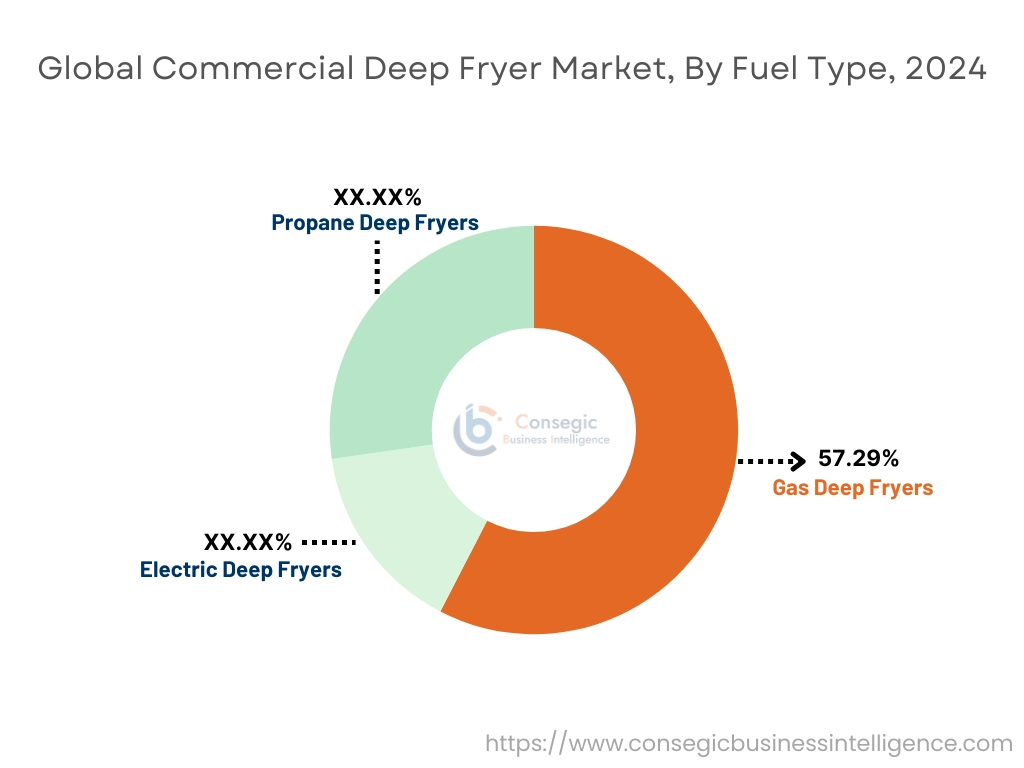
By Capacity:
Based on capacity, the market is segmented into medium deep fryers (5-10 liters)and large deep fryers (10+ liters).
Trends in the capacity:
- The strong construction and durable components of fryers make them suitable for heavy-duty usage in commercial kitchens.
- The increasing popularity of snacking and rising need for quick bites are driving cafes to incorporate fried items into their menus, thereby boosting the need for large capacity commercial fryers.
The medium deep fryers (5-10 liters) segment accounted for the largest revenue share in the year 2024.
- Medium fryers typically hold between 5 to 10 liters of cooking oil. This capacity allows for frying moderate quantities of food in each batch, suitable for establishments with medium demand.
- Medium-sized fryers are available with single or multiple baskets. Single basket models allow frying different items simultaneously, while increasing efficiency and preventing flavor transfer.
- Manufacturers are focusing on designing more energy-efficient medium-sized fryers to reduce operational costs. This includes better insulation and optimized heating systems.
- Thus, the aforementioned factors are driving the commercial deep fryer market growth.
The large deep fryers (10+ liters) segment is anticipated to register the fastest CAGR during the forecast period.
- Large fryers increasingly feature sophisticated digital control panels with precise temperature settings, programmable cooking cycles for different menu items, and automated features like basket lifts with timers to ensure consistent cooking results.
- Large fryers facilitate easy and thorough cleaning, such as large drain valves, easily accessible components, and smooth interior surfaces.
- Fast-food chains, such as KFC, McDonald’s, and Burger King among others have launched their own websites and apps for consumers to order food online. The ease of ordering at home and the concept of drive-through have positively influenced the need for fast food and is consequently expected to boost the need for large deep fryers over the forecast period.
- These factors are anticipated to further drive the commercial deep fryer market trends during the forecast period.
By Features:
Based on features, the market is segmented into anti-overflow protection, adjustable thermostat, and cool-touch exterior.
Trends in the features:
- The development of hybrid deep fryers that combine the benefits of electric and gas power features is an emerging trend in the market. These hybrid fryers offer versatility and flexibility, allowing food service operators to switch between power sources as needed.
- Commercial fryers provide several features, such as precise temperature control, anti-overflow protection, and enhanced safety, which are key aspects driving its adoption in restaurants and cafes among others.
The anti-overflow protection segment accounted for the largest revenue share in the year 2024 and it is expected to register the highest CAGR during the forecast period.
- Anti-overflow features directly address the risk of burns and fires associated with hot oil spills, making them an increasingly desirable safety standard.
- The incorporation of sensors, automation, and sophisticated detection systems reflects the broader adoption of integrating smart technology into kitchen appliances.
- Commercial kitchens have stringent safety protocols, making anti-overflow features a valuable asset in complying with these regulations and ensuring a safer working environment for staff.
- Therefore, the above factors are further driving the global market.
Regional Analysis:
The global market has been classified by region into North America, Europe, Asia-Pacific, Middle East & Africa, and Latin America.
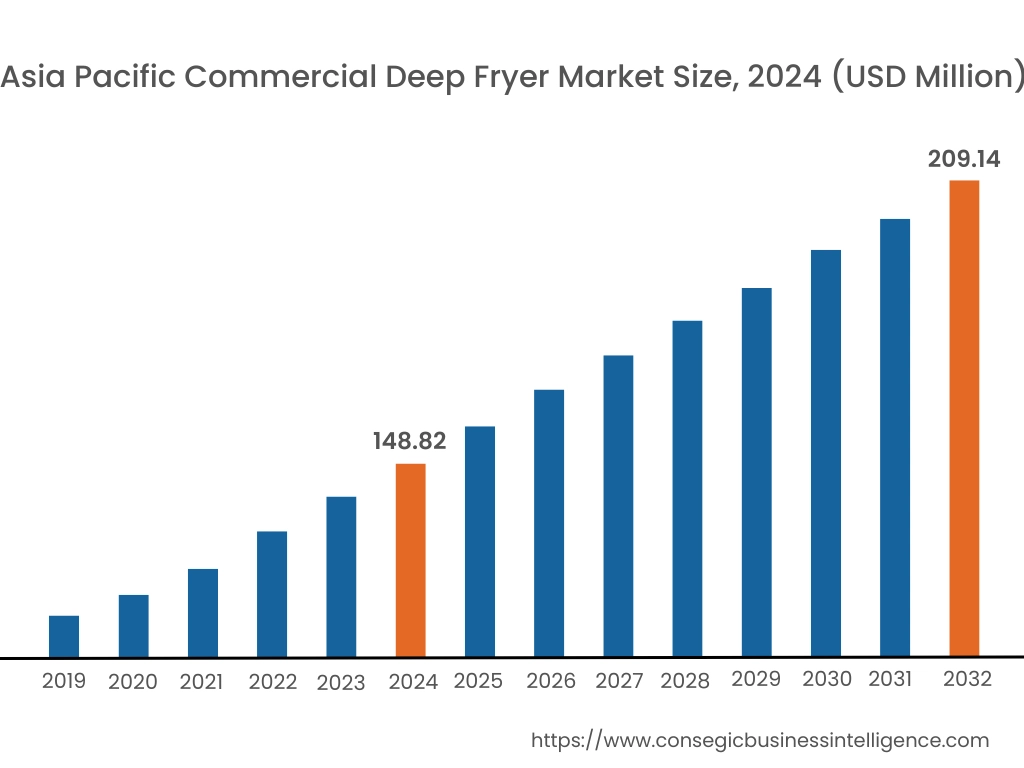
Asia Pacific commercial deep fryer market expansion is estimated to reach over USD 209.14 million by 2032 from a value of USD 148.82 million in 2024 and is projected to grow by USD 152.51 million in 2025. Out of this, the China market accounted for the maximum revenue split of 36.19%. The rapid urbanization, growing middle-class population, and increasing westernization of eating habits are key factors driving the regional market. Countries in the region are experiencing a surge in the number of quick service restaurants, cafes, and full-service restaurants, leading to a higher need for advanced deep-frying equipment. Further, the region's focus on expanding its food service infrastructure to cater to the growing tourism industry is also contributing to market growth. These factors is projected to drive the regional commercial deep fryer market during the forecast period.
- For instance, in October 2022, Karakuri introduced its FRYR automated fry lines, a smart and accurate frying system designed to help restaurants. This technology uses robotics and live data analysis to consistently cook fried food perfectly. By automating the frying process, FRYR allows restaurants to save time, minimize food waste, and achieve a high output of up to 130 pounds (60 kilograms) of French fries every hour.
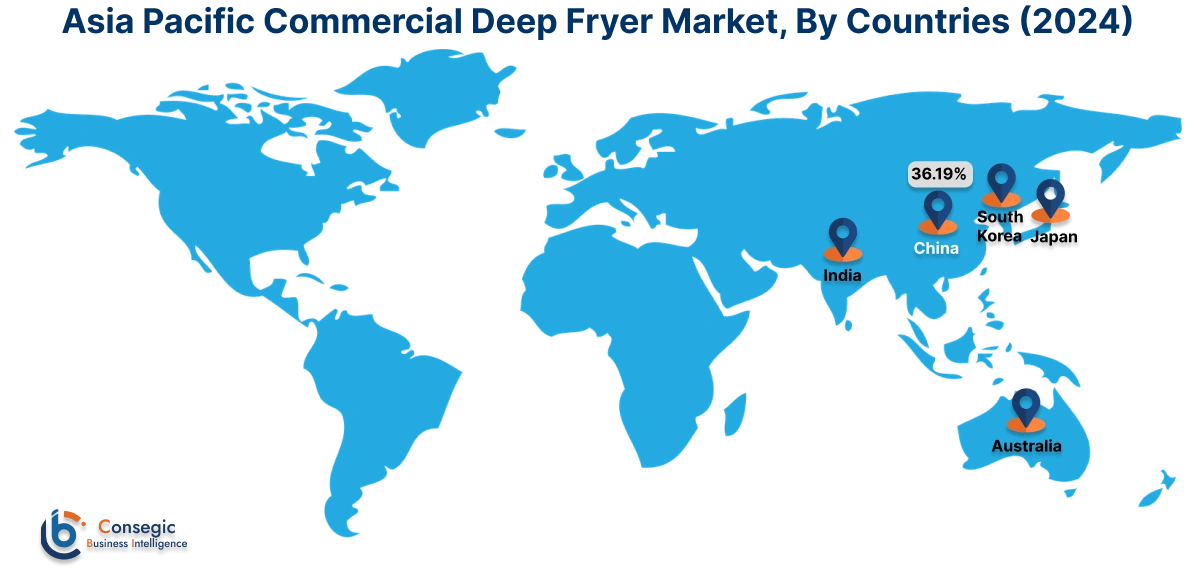
North America market is estimated to reach over USD 287.84 million by 2032 from a value of USD 211.98 million in 2024 and is projected to grow by USD 216.62 million in 2025. North America holds a prominent position in the deep fryer sector, driven by the high concentration of fast-food chains, quick-service restaurants, and a well-established hospitality industry. The United States is a major contributor to the market, with a strong presence of leading fast-food brands and a high need for fried foods. Further, the market is characterized by a preference for advanced and high-capacity deep fryers that offer features such as automatic filtration, programmable cooking settings, and energy efficiency. These factors would further drive the market in North America.
- For instance, Frymaster’s oil-conserving electric fryers are designed to handle high production menu, while effectively conserving energy and oil. The 11814E electric fryers offer a large 60-pound (30-liter) oil capacity and a spacious 18 by 14 by 4.25-inch cooking area. This design allows users to fry three baskets of food simultaneously within that cooking space.
According to the analysis, the commercial deep fryer industry in Europe is anticipated to witness significant development during the forecast period. The emphasis on energy efficiency and sustainability in Europe is driving the adoption of advanced electric deep fryers that offer reduced energy consumption and eco-friendly features. Additionally, the growing trend of snacking and rising demand for fried appetizers in cafes and bars are contributing to Latin America market growth. Further, the Middle East & Africa (MEA) market is boosted by the popularity of fried dishes in local cooking and the increasing number of individuals from other countries living in the region. Modern kitchen appliances are becoming particularly popular in the MEA region, where changing lifestyles and rising disposable income are fueling the market development.
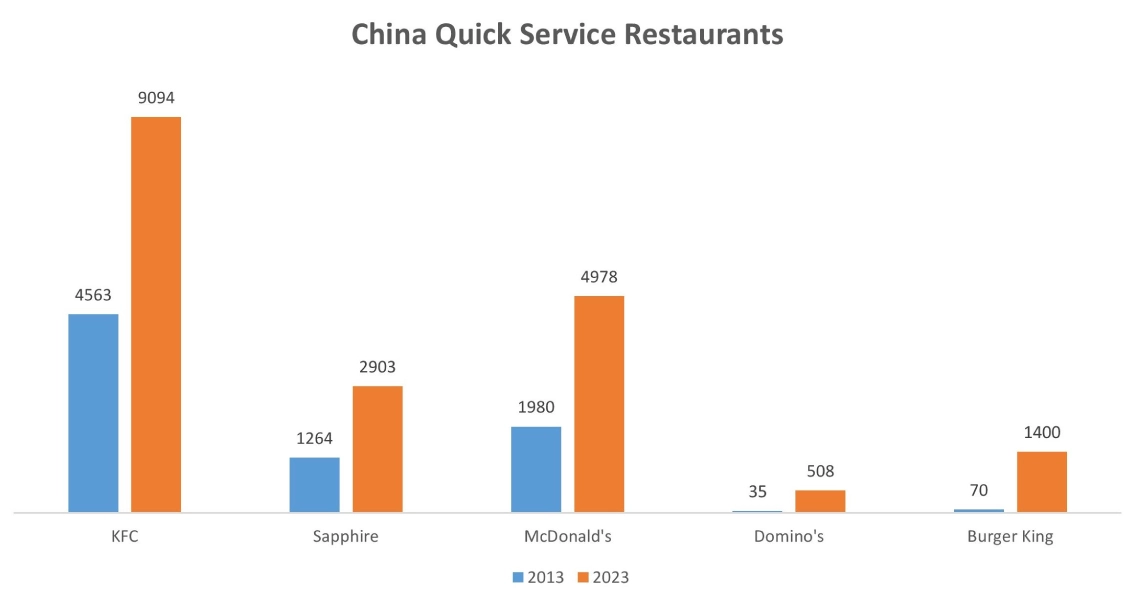
Top Key Players and Market Share Insights:
The global commercial deep fryer market is highly competitive with major players providing products to the national and international markets. Key players are adopting several strategies in research and development (R&D), product innovation, and end-user launches to hold a strong position in the market. Key players in the commercial deep fryer industry include-
- Frymaster (U.S.)
- Breville Pty Ltd (Australia)
- National Presto Industries, Inc. (U.S.)
- WELBILT INC (U.S.)
- TTK Prestige Ltd. (India)
- AB Electrolux (Sweden)
- Fagor Professional (Spain)
- Groupe SEB (France)
- Hamilton Beach Brands Holding Company (U.S.)
- Henny Penny (U.S.)
Commercial Deep Fryer Market Report Insights :
| Report Attributes | Report Details |
| Study Timeline | 2019-2032 |
| Market Size in 2032 | USD 798.24 Million |
| CAGR (2025-2032) | 4.2% |
| By Type |
|
| By Fuel Type |
|
| By Capacity |
|
| By Features |
|
| By Region |
|
| Key Players |
|
| North America | U.S. Canada Mexico |
| Europe | U.K. Germany France Spain Italy Russia Benelux Rest of Europe |
| APAC | China South Korea Japan India Australia ASEAN Rest of Asia-Pacific |
| Middle East and Africa | GCC Turkey South Africa Rest of MEA |
| LATAM | Brazil Argentina Chile Rest of LATAM |
| Report Coverage |
|
Key Questions Answered in the Report
How big is the Commercial Deep Fryer Market? +
Commercial Deep Fryer market size is estimated to reach over USD 798.24 Million by 2032 from a value of USD 583.92 Million in 2024 and is projected to grow by USD 597.03 Million in 2025, growing at a CAGR of 4.2% from 2025 to 2032.
Which is the fastest-growing region in the Commercial Deep Fryer Market? +
Asia-Pacific region is experiencing the most rapid growth in the market.
What specific segmentation details are covered in the Commercial Deep Fryer report? +
The commercial deep fryer report includes specific segmentation details for type, fuel type, capacity, features, and region.
Who are the major players in the Commercial Deep Fryer Market? +
The key participants in the market are Frymaster (U.S.), Breville Pty Ltd (Australia), AB Electrolux (Sweden), Fagor Professional (Spain), Groupe SEB (France), Hamilton Beach Brands Holding Company (U.S.), Henny Penny (U.S.), National Presto Industries, Inc. (U.S.), WELBILT INC (U.S.), TTK Prestige Ltd. (India), and others.
